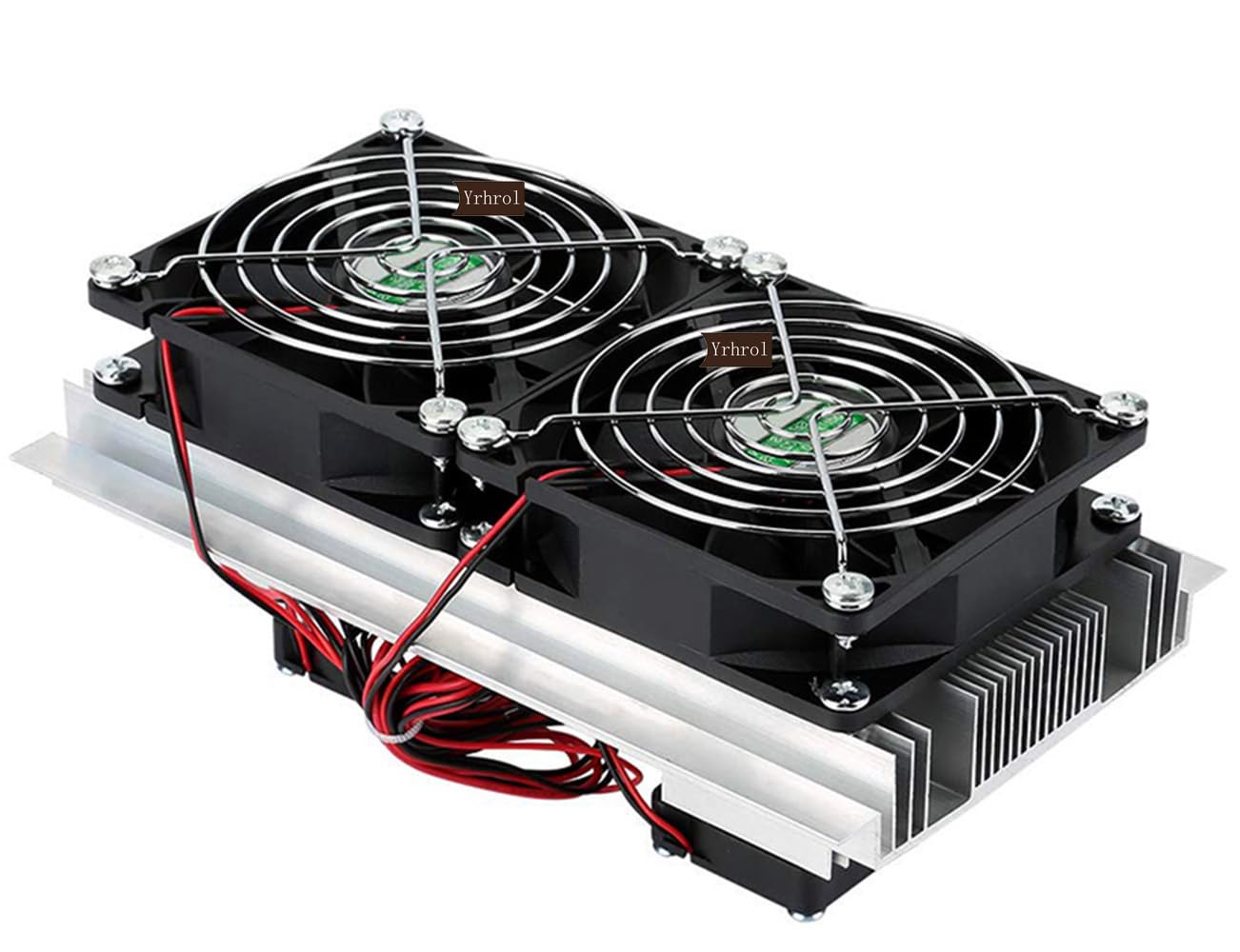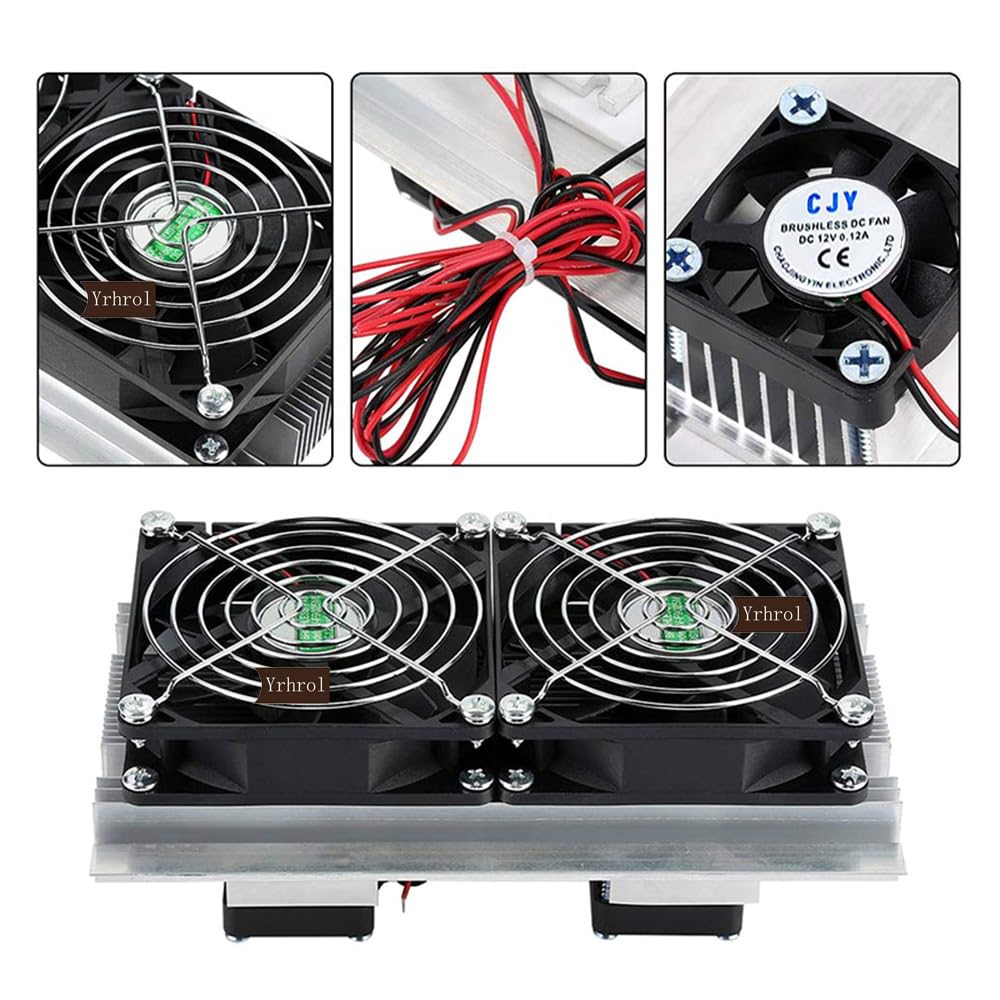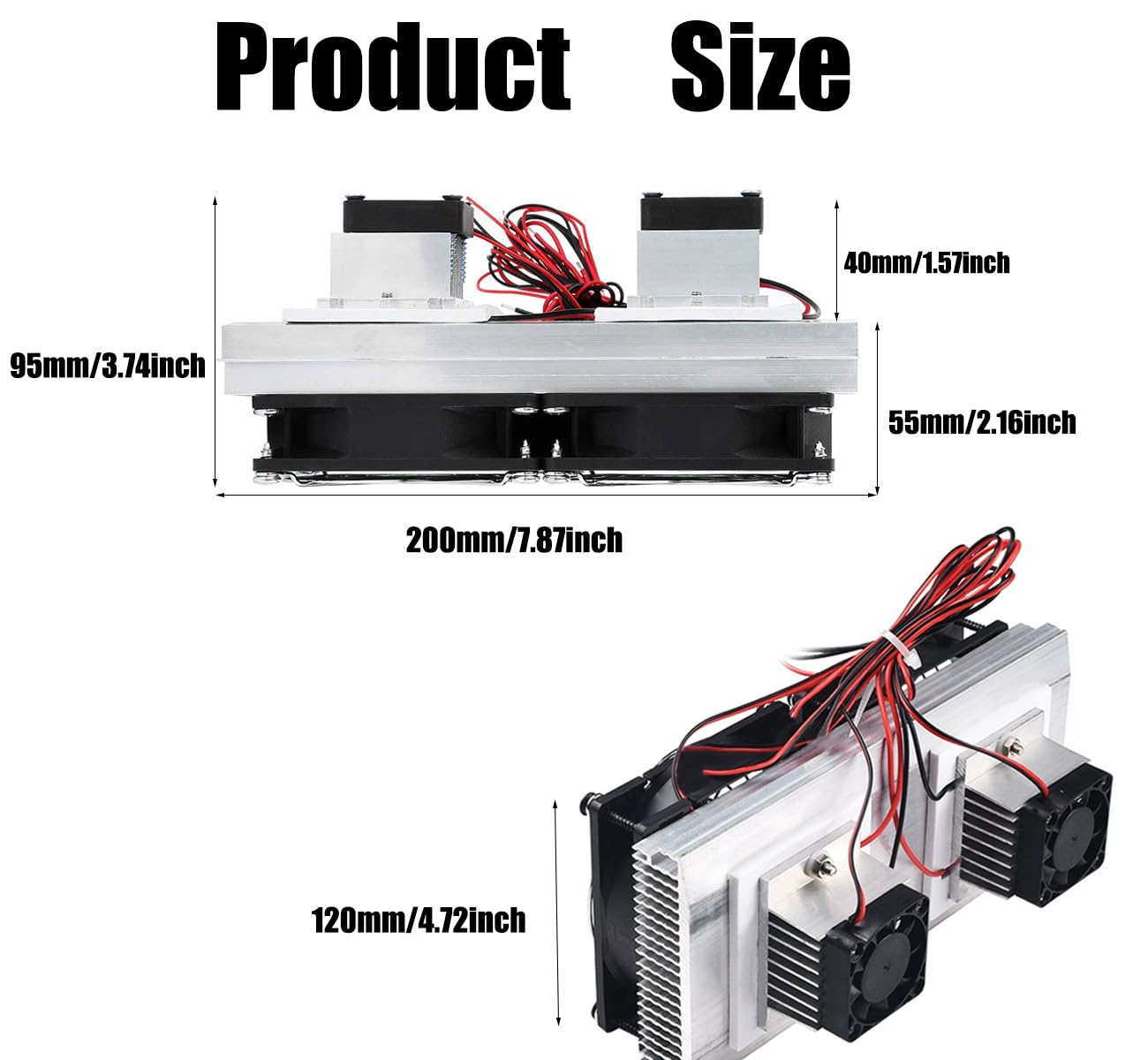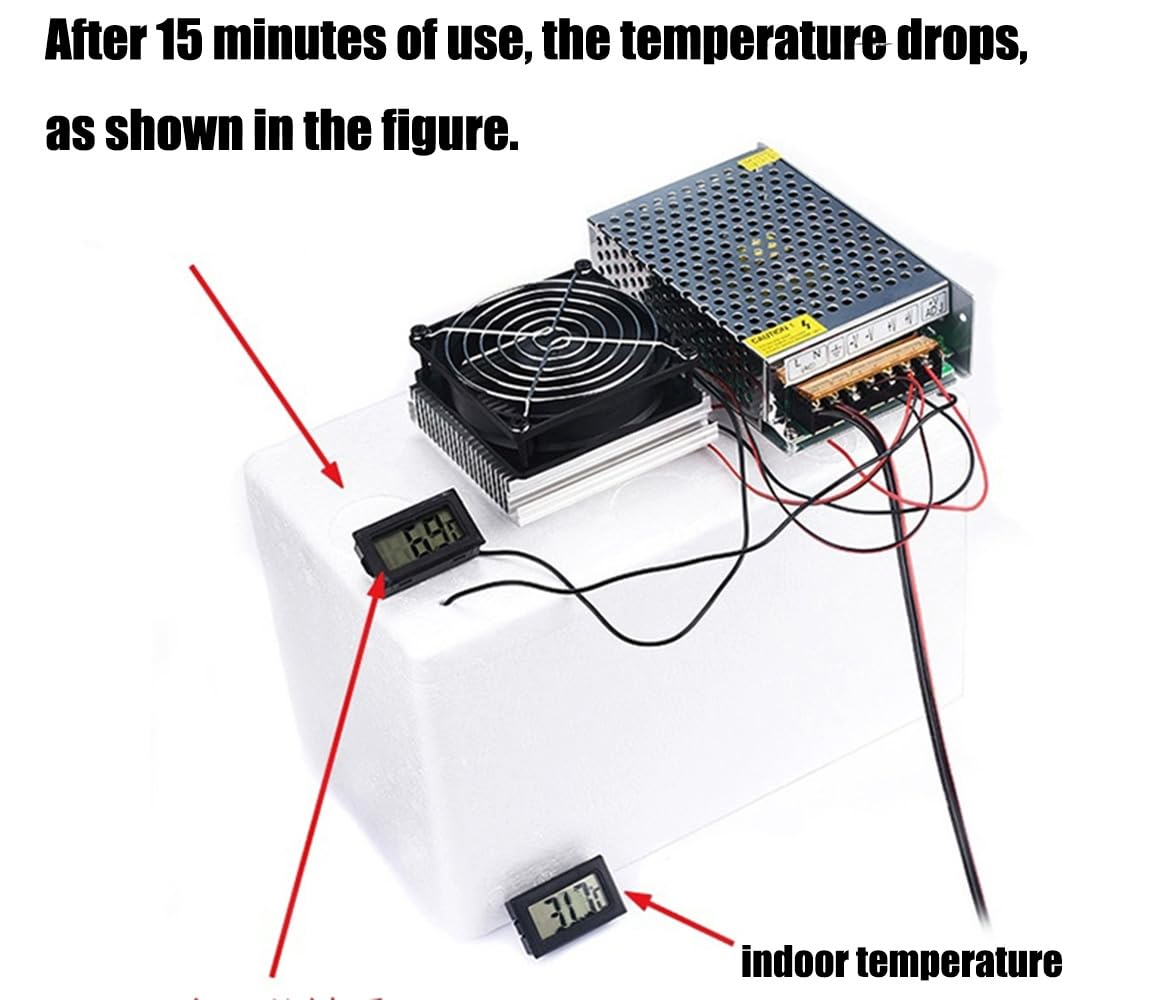







❄️ Cool smarter, not harder — the ultimate compact chill kit for pros on the go!
The Yrhrol DC 12V DIY Thermoelectric Peltier Cooling System Kit features a durable aluminum heat sink paired with TEC1-12706 semiconductor modules, delivering 144W of silent, refrigerant-free cooling. Its dual cold junctions and dual fans ensure rapid temperature drops in compact spaces, making it ideal for electronics, pet beds, wine cellars, and more. Pre-assembled and easy to install, this 785g kit is a versatile, space-saving solution for efficient thermal management.
| Manufacturer | Yrhrol |
| Part number | Thermoelectric Semiconductor Radiator |
| Item Weight | 785 g |
| Product Dimensions | 19.99 x 11.99 x 9.5 cm; 785 g |
| Item model number | Thermoelectric Semiconductor Radiator |
| Style | Dual |
| Material | Aluminium |
| Voltage | 12 Volts |
| Wattage | 144 watts |
| Item Package Quantity | 1 |
| Noise Level | 30 dB |
| Included components | heat sink |
| Batteries included? | No |
| Batteries Required? | No |
A**R
Highly inefficient as a cooling option, which is expected, It is a useful learning tool though
The overall fit and finish of the parts that make up this product are rough, the heatsinks have raw sawn edges with loose bits of aluminium and sharp burrs all over it. The screws are just a bunch of self-tappers threaded into the aluminium without a care in the world. Everything does hold together well enough without any wobble but I just think that in general the unit could be made to a slightly better standard.The peltier unit draws about 4.4amps at 12v when starting up from around 20 degrees Celsius ambient and it reaches 10c on the cold side and 30c on the hot side within a couple of minutes and settles there while drawing around 4 amps. The fans are reasonably quiet and despite the visual appearance the product does indeed do what you expect from a peltier, the larger side gets hot, and the smaller side gets cooler when electricity is supplied to the unit.Just for fun and testing, I made a little 10 cm cubed container out of some 5mm thick foam core held together with duct tape. After ten minutes, I checked to see what temperature the air inside was at. This one peltier was just about able to bring it down to 8 degrees Celsius, so the unit does indeed have a little bit of cooling potential. It's just ultimately a very inefficient method compared to even a tiny compressor based cooler.Despite the limitations, I learned a little more about these units and was able to learn about thermoelectric cooling by playing around with this little unit. I like to learn by doing whenever possible, and this is a neat way to do that.I definitely see this as a learning aid or a toy rather than anything else, sure you could make a tiny electric fridge/cooler using it, but there are hundreds of commercial options that just work better and are much more efficient and nicer looking in the end. There really is nothing stopping you from making something that does work using these units but it would take a well insulated box and several of these to get the air cool enough to work on a pack of beer or soda cans. That's not even taking into account the hundreds of watts in power required on top of the initial investment of the raw materials to even build it.I don't really have any issue recommending the unit, it's priced comparably to similar units from other brands and it does work as intended. The limitations I mentioned are a result of the peltier effect, and all the units that run on these peltier modules will have the same limitations.
C**N
Takes about 71 watts
I tested this device out at an ambient resting temperature of 20 degrees C. The aluminium heatsinks had been allowed to get to temperature beforehand.I applied a 12V power supply which was more than capable at 20A, but the peltier, and two fans took about 71W of power total. If one connects all of the red as positive, and black as negative, then the device is set up to heat the large heatsink, and cool the smaller heatsink.After 60 seconds the large heatsink had moved to a consistent 22 degrees C, and the small heatsink had cooled to about 7 degrees C.It should be noted of course that junctions like this one are better at heating that at cooling. However if you had a small can or similar that you wanted to cool, and were capable of keeping the hot air/side away from the cool side efficiently, then this could be used for cooling an item.
TrustPilot
4天前
2天前